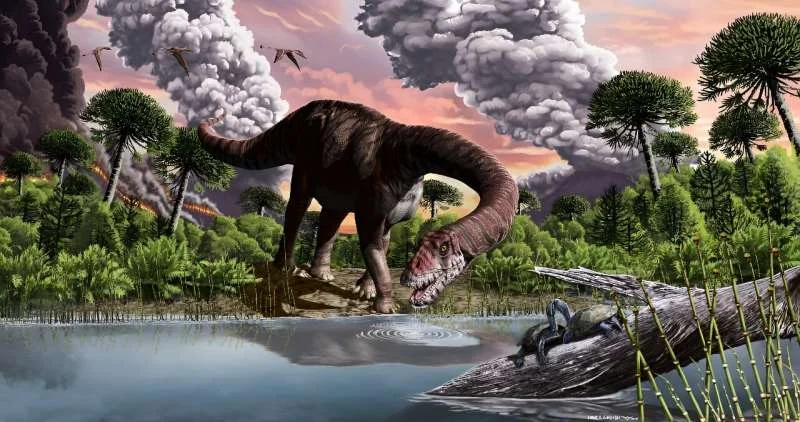About 66 million years ago, an asteroid larger than Mount Everest hit Earth and wiped out three-quarters of all life on the planet, including dinosaurs. We know that.
But exactly how the Chicxulub asteroid impact caused the extinction of these animals remains a matter of debate. The recent theory is that sulfur from an asteroid impact or soot from the global fires it caused darkened the skies and plunged the world into a long, dark winter, killing all but a lucky few.
But a study published Monday, based on particles found at a key fossil site, confirmed an earlier hypothesis: that the shock winter was caused by dust kicked up by an asteroid. Fine silicate dust from crushed rocks remained in the atmosphere for 15 years, reducing global temperatures by up to 15 degrees Celsius, researchers said in a study published in the journal Nature Geoscience.
In 1980, father-son scientists Luis and Walter Alvarez first suggested that dinosaurs died as a result of an asteroid impact that covered the Earth with dust. His claims were initially met with some skepticism, until decades later the massive Chicxulub Crater was discovered on the Yucatan Peninsula in the Gulf of Mexico.
Currently scientists largely agree that Chicxulub is responsible.
But the idea that winter wind is caused by sulfur, not dust, has become “very popular” in recent years, researcher Özgür Karatekin from the Royal Observatory of Belgium told AFP. Karatekin, one of the authors of the study, said this was because the dust from the collision was thought to be the wrong size to remain in the atmosphere long enough. For the study, an international team of researchers was able to measure dust particles that were likely formed immediately after the asteroid impact.
“Catastrophic Collapse”
The particles were found at the Tanis fossil site in North Dakota, USA. Despite being 3,000 kilometers (1,865 miles) from the crater, this area has preserved a number of remarkable finds, possibly resulting from the asteroid’s direct impact on the sedimentary layers of an ancient lake.
According to the researchers, the dust particles ranged in size from 0.8 to 8.0 micrometers; this is the exact size that allows them to remain in the atmosphere for up to 15 years. By feeding this data into climate models similar to those used for modern Earth, the researchers determined that dust played a much larger role in the mass extinction than previously thought.
They estimate that 75 percent of all material thrown into the atmosphere by the asteroid consists of dust, 24 percent sulfur, and 1 percent soot.
Karatekin said the dust particles “completely stopped photosynthesis” in plants for at least a year, causing a “catastrophic collapse” of life.
Sean Gulick, a geophysicist at the University of Texas at Austin who was not involved in the study, told AFP the study was an interesting attempt to answer the “burning question” of winter’s impact, but did not provide a definitive answer. He emphasized that learning what happened during the last mass extinction on Earth is important not only for understanding the past, but also for the future.
“Perhaps we can better predict our own mass extinction, which we are probably in the middle of,” Gulyk said. Source













